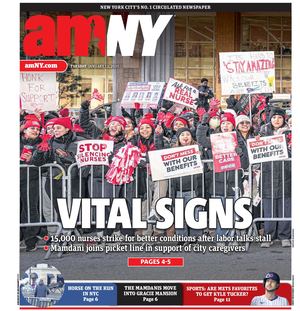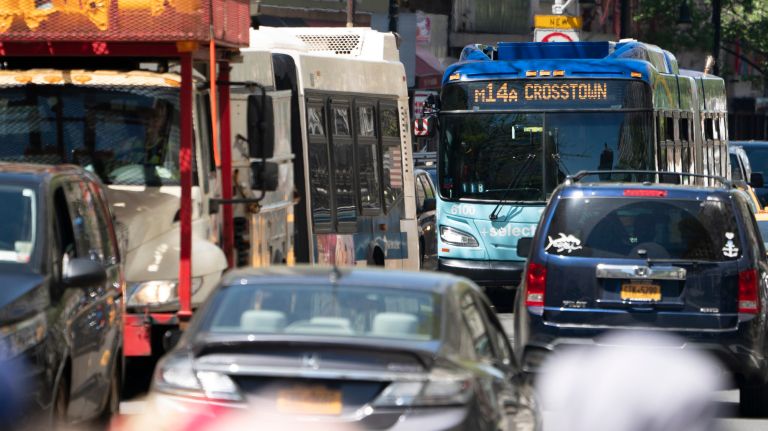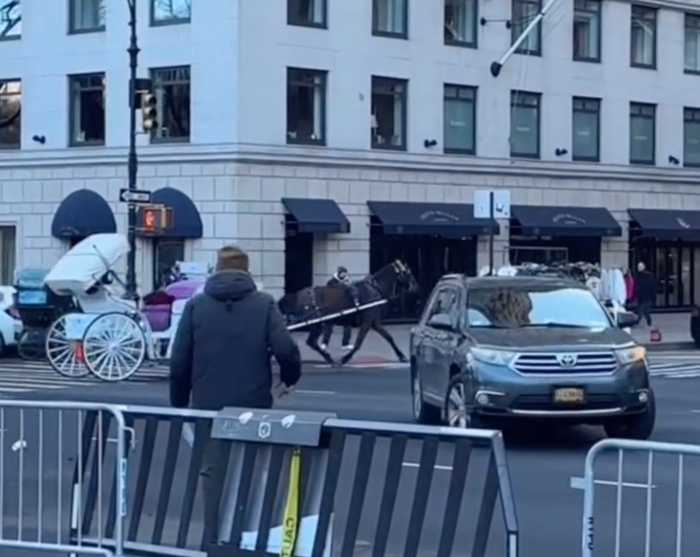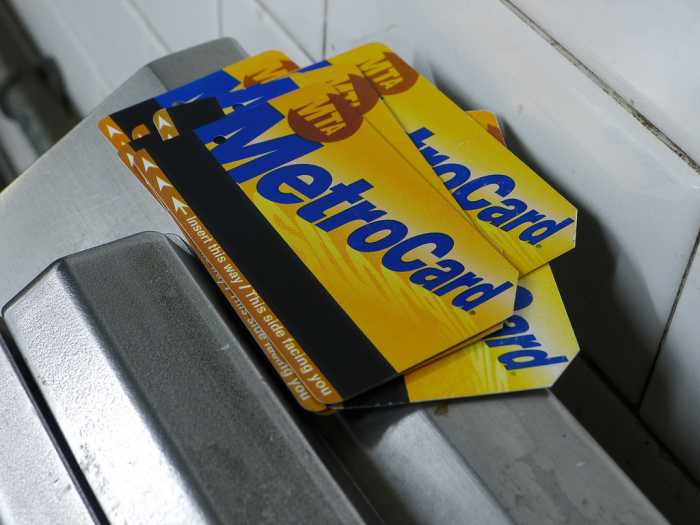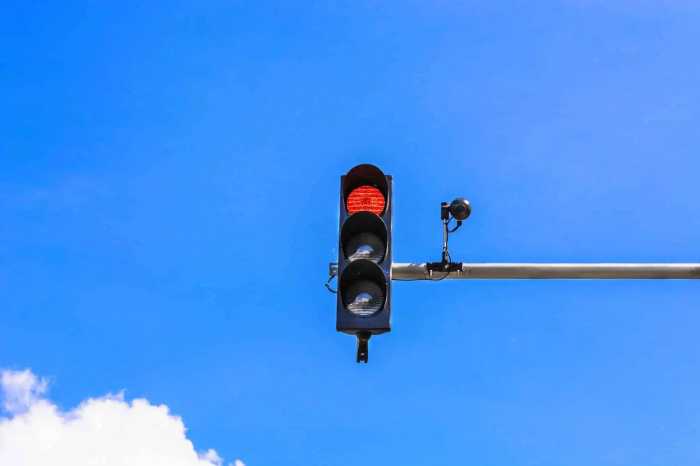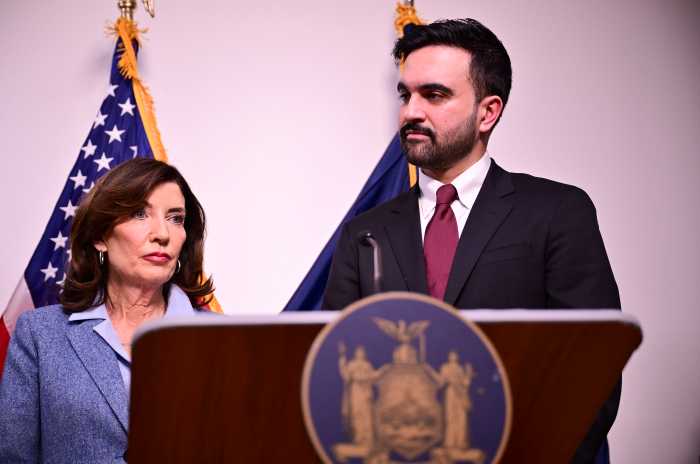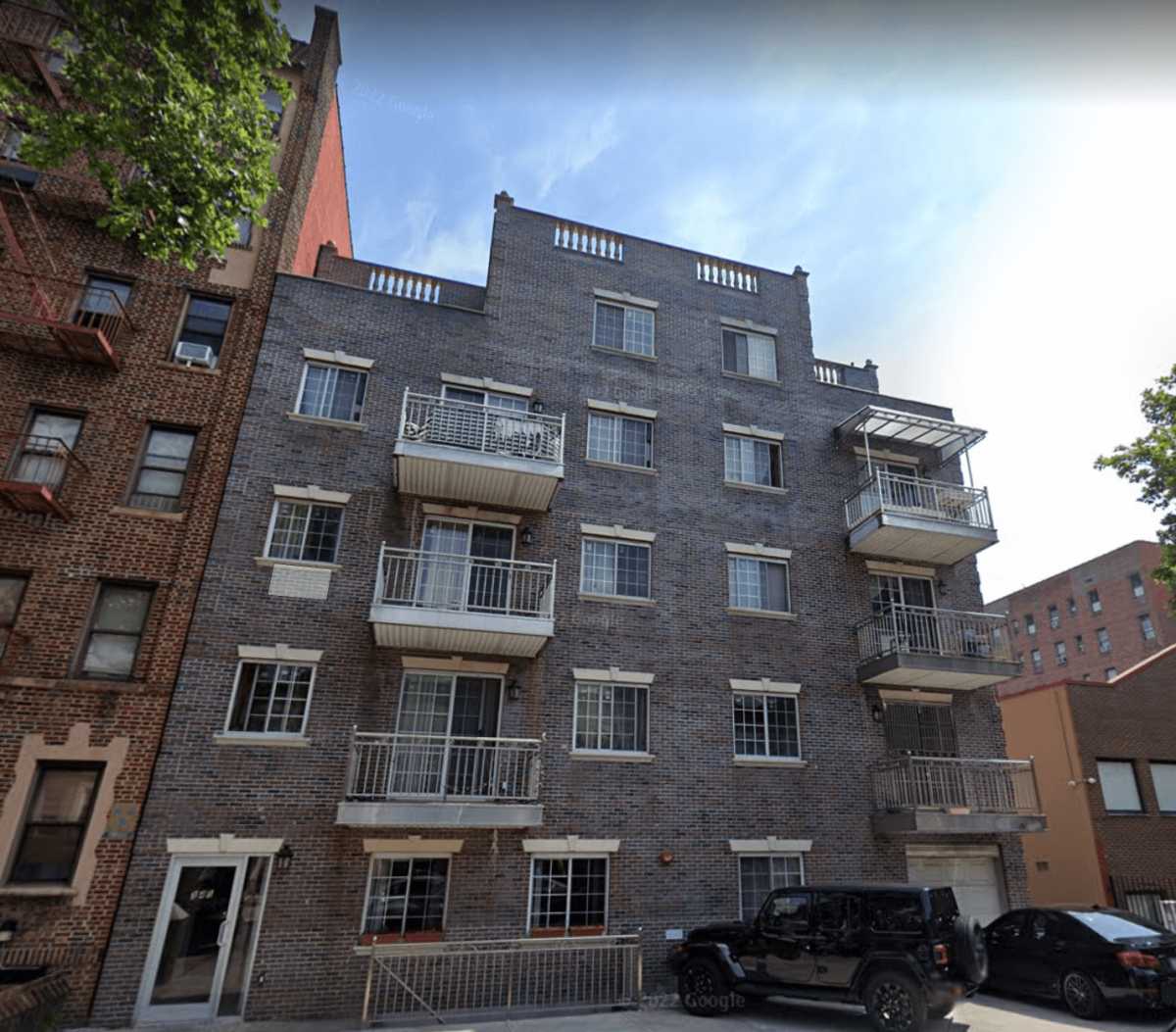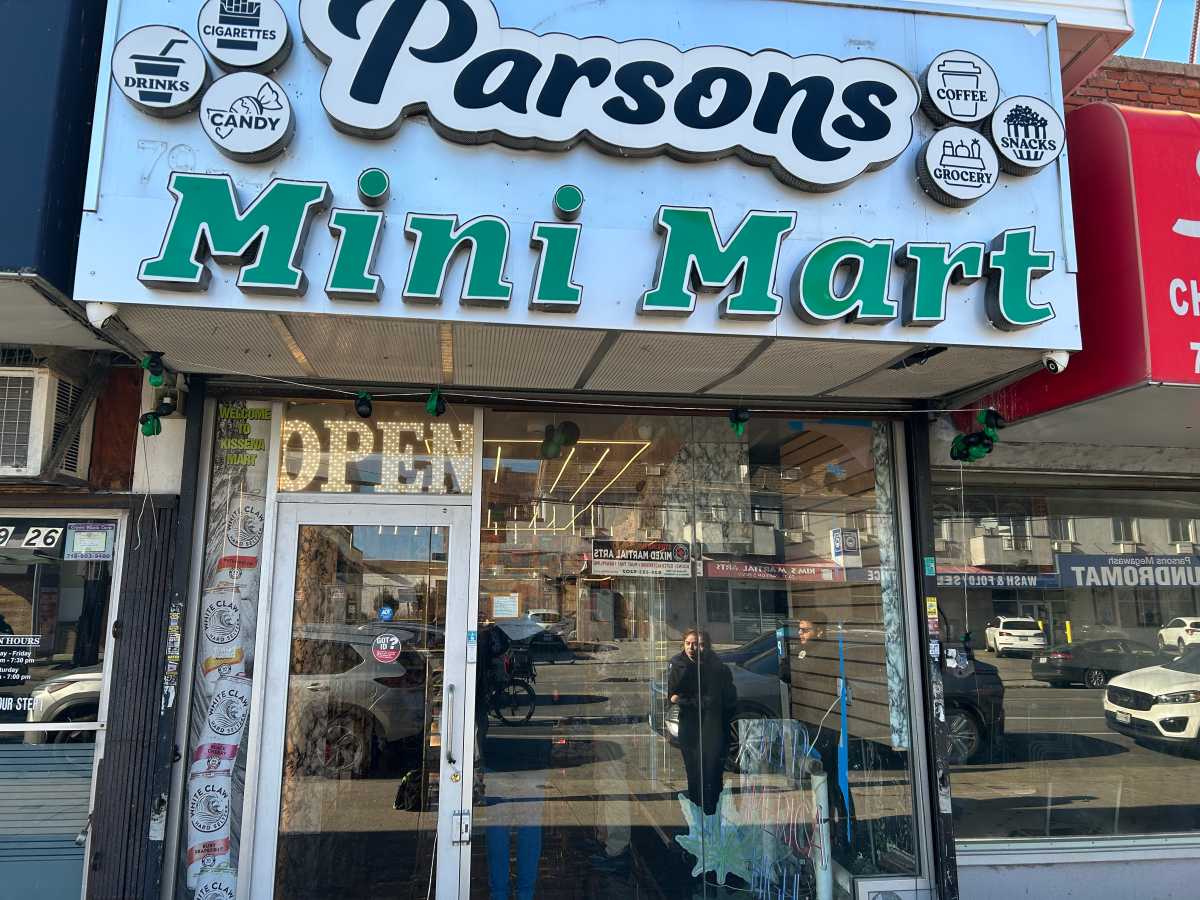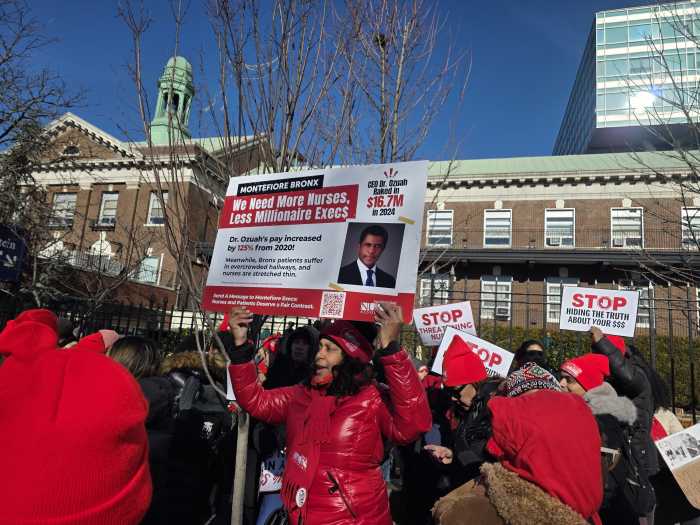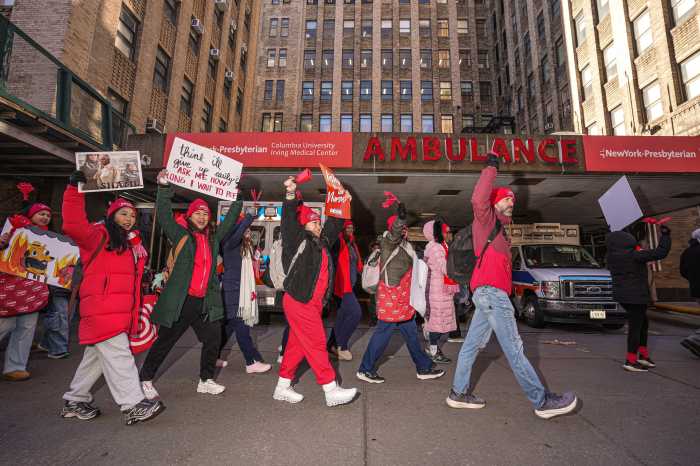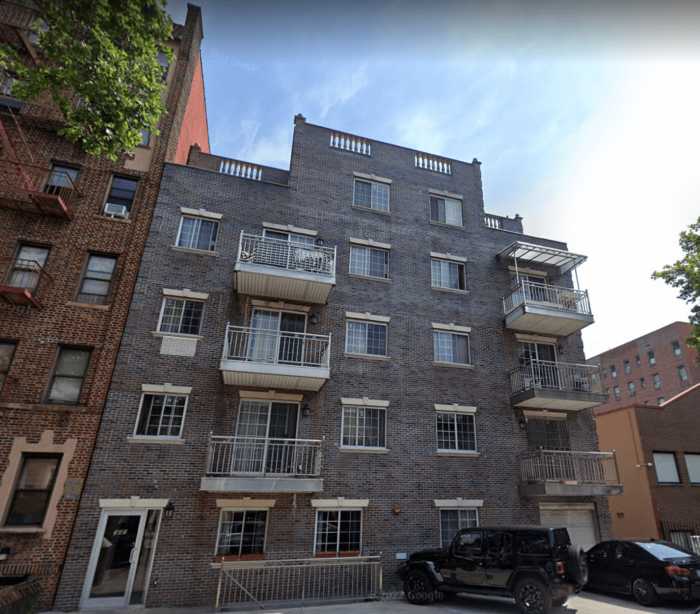
Transit advocates praised Mayor Bill de Blasio on Wednesday after he proposed a pilot to turn Manhattan’s 14th Street into a mostly bus-only corridor as a means to help L train riders get across Manhattan.
“We have an opportunity to try something new and really get bus riders moving on one of our busiest streets,” de Blasio said in a statement. “As we continue to address congestion across New York City, this is an experiment that, if successful, could provide us another tool to move buses faster and save people valuable time for the things that matter.”
The plans, first reported by amNewYork, will roll out in June — roughly a month after the L train service “slowdown” begins — and last for 18 months. The pilot will include four lanes across the street from Ninth to Third Avenues, two in each direction. The center lanes will be dedicated to bus and truck traffic, while the outer curbside lanes will be reserved for truck loading and local traffic looking to make pickups, drop-offs or to access garages along the block.
Polly Trottenberg, the city’s DOT commissioner, said the restrictions will likely be in place only part of the day.
“There will be hours in effect. The original proposal had from 5 (a.m.) to 10 (p.m.),” Trottenberg said during a news conference Wednesday afternoon. “Were looking at those hours. It may not be those hours … and the hours are something that we can very much adjust.”
Private vehicles in these lanes will be required to turn right, off the street, at the next possible opportunity and left turns will be barred. The city drew inspiration from the King Street project in Toronto, where similar vehicular restrictions were put in place to improve cripplingly slow streetcar service on the major city artery.
Joe Cutrufo, a spokesman at the nonprofit Transportation Alternatives, which has aggressively pushed a plan to turn the corridor into a bus-only street, called the city’s proposal “cutting-edge” and “sensible.” The concept closely mirrors the city’s initial plan under the now-canceled full L train shutdown to turn the 14th Street into a busway — though the city waited until two days before the Canarsie tunnel repairs begin to unveil the redesign.
“This absolutely beats having the M14 crawling along in mixed traffic,” said Cutrufo. “There is the possibility some drivers won’t obey the rules and gum up the works. We’re optimistic that [automated] enforcement can rein that in.”
The M14A and D routes carry 27,000 daily riders from the Lower East Side to Union Square and the Meatpacking District, taking passengers by a host of institutions and storefronts including New York University facilities, Pratt School, Trader Joe’s, Whole Foods and a host of mom-and-pop shops.

L trains from Bedford through Manhattan will run every 20 minutes — that’s three trains an hour — on nights and weekends beginning this Friday. The M14 is expected to pick up some of the slack, running above the L’s route across the island. The MTA plans to roll out SBS service, which will come with the new street restrictions, but in the meantime will add local bus service once the L’s Canarsie tunnel repairs begin.
The mayor’s plan won endorsements from Manhattan Borough President Gale Brewer and several City Council members, including Manhattan’s Carlina Rivera and Keith Powers.
But some residents and local businesses are feeling stiffed. The most vocal opponents of a busway, the 14th Street Coalition, a collection of residents and business owners, weren’t happy with the city’s new plans and felt the city hadn’t listened to its concerns about how a busway could push local traffic onto side streets. Coalition member Judy Pesin had argued that the L had been shut down on weekends before and that extra bus service, or bus lanes, would suffice to move people efficiently.
Pesin said she felt “taken for a ride” — that months of community input sessions were a “sham.”
“They’re basically doing what they wanted to do a year-and-a-half ago when the L train was closing … they just focus on getting people through the neighborhoods without caring about the people in the neighborhoods,” Pesin added. “That’s what the mayor’s saying.”
But proponents saw the plan as an exciting step in a new direction for Manhattan’s crosstown streets, potentially showing how they could be used to move greater amounts of people more safely and efficiently.
Kate Slevin, a senior vice president at the Regional Plan Association, another group that pushed for a busway, in a statement called for both agencies to release “frequent and transparent updates on traffic, ridership and cost” as the L work moves forward.
“It’s long past time New York City adopt street designs that do more to prioritize low-carbon transportation, like bus transit and cycling,” Slevin said, adding, “and 14 Street is the prefect corridor to try this out.”
There were some concerns how traffic would flow together under the concept. Alon Levy, a researcher and blogger at Pedestrian Observations, questioned the effectiveness of having the level of mixing between buses, trucks and private vehicles that the city is permitting, and whether it will be enough to truly speed up buses on 14th Street. He prefers physically separated bus lanes, which he believes could be achievable within the width of the street.
“What I’m proposing is pretty ambitious, but the city’s design is just strange,” Levy said in an email. “It has red-painted bus lanes and restrictions on car through-traffic, making it look like some fancy center-running busway, but buses still get shared lanes, not even the dedicated curb lanes on other corridors in the city. I don’t understand why this is so.”
Trottenberg said the city had monitored pickups and drop-offs along 14th Street and believed there wouldn’t be a significant conflict.
“The good news is there isn’t that much pickup and drop-off activity …" she said. "So we think we really are going to be able to accommodate those local pickups and drop-offs, move the trucks off the side streets and still keep bus speeds going up and bus reliability going up."
